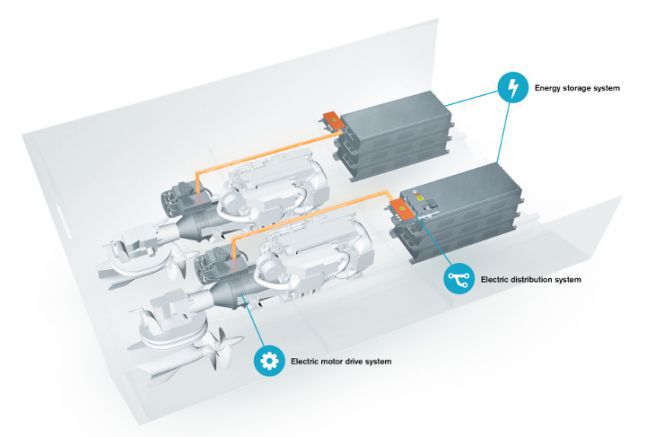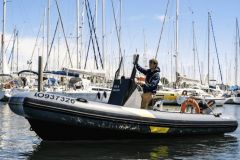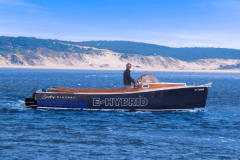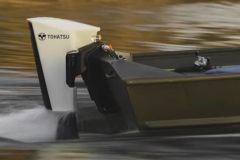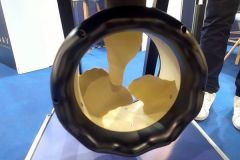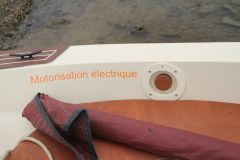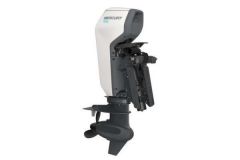Volvo Penta's electric strategy
Swedish marine engine manufacturer Volvo Penta announced in early June 2018 its desire to offer electric propulsion systems for marine applications from 2021 onwards . In the wake of these statements, he has just presented the first concrete version of this strategy. Volvo Penta unveiled its first adaptive electric hybrid engine on the counter-rotating IPS engines that have made it so successful. The product is currently being developed, with the first sea trials planned for 2020 and marketing for 2021 for the professional navy and then pleasure craft.
A parallel hybrid system for high powers
The propulsive line presented fits on engines from 8 to 13 liters, others should follow on lower powers. It is the result of Volvo Penta's adaptation of the Volvo Group's proven land-based technology to the marine environment. A clutch is added between the conventional engine and the IPS propulsion base. An electric motor is attached to it, in parallel with the internal combustion engine. It is powered via a fleet of Lithium Ion batteries, recharged at berth or by the main engine. Depending on the position of the clutch, the energy required to propel the boat is supplied either by the electric motor alone or by the two motors in parallel.
Consumption and comfort
In addition to the ecological advantages of the electric mode, whose absence of gaseous emissions gives access to natural reserves, Volvo Penta points out the interests of the device for the yachtsman relating to noise, vibrations and operating costs.
A configuration adaptable to all navigations
The modularity of the battery park allows the propulsion system to be adapted to the boat's programme. Boaters operating mainly in pure electric mode will favour sailing autonomy by increasing the number of batteries, when those who often have access to shore recharge will be able to limit the power of their internal combustion engine.

